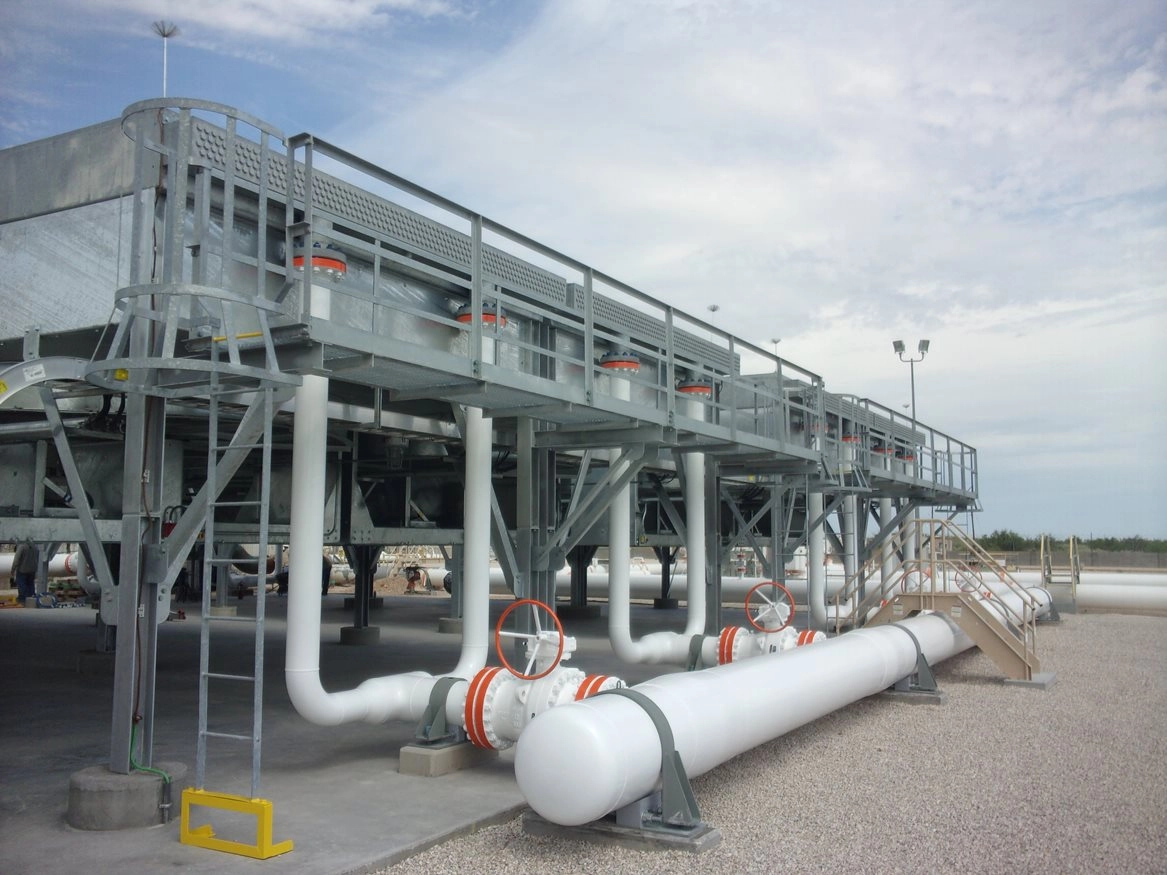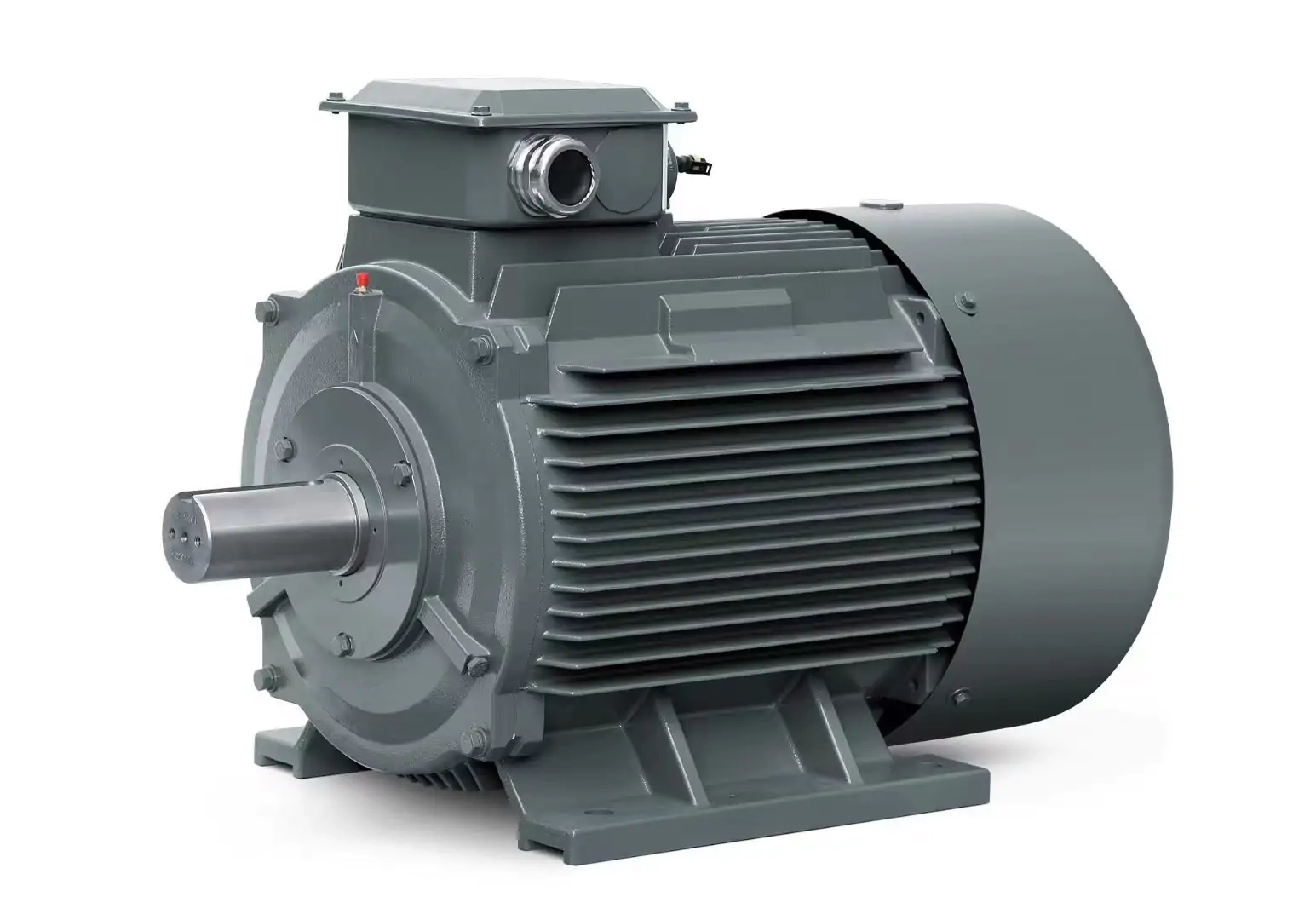Air Cooled Heat Exchangers (ACHEs) are vital parts in industries like oil and gas, chemicals, power plants, and heating-cooling systems. These units move heat from process liquids to the air. They don’t use water. This makes them ideal for areas with little water or strict water disposal rules. ACHEs usually have finned tubes. Process liquid flows through these tubes. Fans push outside air over the tubes. This helps transfer heat. Fans, powered by electric motors, are key. They affect cooling power and energy savings.
Older ACHE systems often used induction motors with gearboxes or belt drives. These set the needed speed and force. But they add mechanical issues. They need frequent upkeep due to wear. They also lose efficiency, especially at lower loads. To fix these problems, newer systems use low-speed high-torque permanent magnet synchronous motors (PMSMs). These offer better savings and dependability.

Low-speed high-torque PMSMs are built to drive big fans in ACHEs directly. They don’t need gearboxes or belts. They provide enough force at slow speeds. This direct drive simplifies the system. It reduces weak spots. It boosts overall dependability.
These motors do more than simplify mechanics. They allow exact speed control with Variable Frequency Drives (VFDs). Operators can adjust fan speeds based on cooling needs. For example, on cool nights, fan speeds can drop to save energy. During hot times, speeds can rise for better cooling.
By delivering steady force and high efficiency in different conditions, low-speed high-torque PMSMs greatly improve ACHE energy savings. Studies show these motors can be 1-3% more efficient than induction motors. This can save up to $1,400 yearly for large systems.
Low-speed high-torque PMSMs are synchronous motors. They use permanent magnets in their rotors. These create a steady magnetic field. Unlike induction motors, which use rotor windings and slip rings, PMSMs rotate in sync without slip losses. Alternating current in the stator windings makes a spinning magnetic field. This field works with the rotor’s magnetic field.
This design has several benefits:
Compared to induction motors:
Low-speed high-torque PMSMs are used widely in ACHE tasks:
These tasks benefit from PMSMs’ variable speed abilities. Cooling needs often change with weather or process demands.

Using low-speed high-torque PMSMs offers many benefits:
Studies show PMSMs are 1-3% more efficient than induction motors. This cuts running costs. It also supports green goals by lowering emissions.
No gearboxes or belts simplify the system. This cuts upkeep needs a lot. Large systems can save up to $1,000 yearly.
Fewer moving parts mean less downtime. This increases Mean Time Between Failures (MTBF). Sealed bearings extend lubrication needs up to three years or more.
VFD speed control lets operators tweak cooling performance. This saves energy during low-demand times.
Lower energy use reduces carbon emissions. This supports company green plans.
PMSMs are heavier due to strong builds. But they skip extra parts like gearboxes. This shrinks the system’s overall size.
These benefits make low-speed high-torque PMSMs a top choice. They modernize ACHE systems in industries seeking better performance and cost savings.
Use of low-speed high-torque PMSMs in ACHEs is growing. Their high efficiency and dependability drive this. Industry trends show a focus on automation and smart controls. These allow real-time performance tweaks. This makes PMSMs more appealing for modern uses.
Green goals also boost demand for energy-saving tech like PMSMs. Their lower energy use fits global efforts to cut emissions. Advances in magnet tech may lower costs. They could reduce the need for rare-earth materials.
PMSMs cost more upfront. But long-term savings in energy and upkeep make them appealing. Industries like oil refineries, power plants, and chemical facilities see the value. As tech improves, PMSMs will likely become even more efficient and affordable. They will remain a key part of ACHE systems.
Qingdao Enneng Motor Co., Ltd. offer low-speed high-torque PMSMs made for air-cooled heat exchangers. ENNENG’s motors have patented designs. These improve dependability and ease setup.
These motors link directly to fan blades. No gearboxes or belts are needed. This cuts mechanical issues. It also boosts system dependability by reducing weak spots. ENNENG’s designs are small yet strong. They offer high force density. They take up less space than older setups.
The motors are built for tough industrial settings. They suit outdoor use in oil refineries or power plants. Sealed bearings need little lubrication. Intervals can stretch up to three years. This cuts upkeep needs.
ENNENG focuses on green practices. Their PMSMs save up to 3% energy compared to induction motors. This leads to big cost cuts over time. It also supports environmental goals. Looking for top-tier permanent magnet motor systems? Contact ENNENG today and power your performance!
1.What makes low-speed high-torque PMSMs suitable for ACHEs?
Low-speed high-torque PMSMs give steady force at slow speeds. They enable direct drive without gearboxes or belts. This simplifies design. It cuts upkeep needs. It also boosts efficiency.
2.How do Variable Frequency Drives (VFDs) enhance the performance of these motors?
VFDs allow exact speed tweaks based on cooling needs. For example, fan speeds can drop during cool times. They can rise during hot periods. This saves energy while keeping cooling effective.
3.What industries benefit most from adopting ENNENG’s low-speed high-torque PMSMs?
Industries like oil refineries, chemical plants, power facilities, HVAC systems, and geothermal plants gain a lot. These motors meet tough cooling demands efficiently.